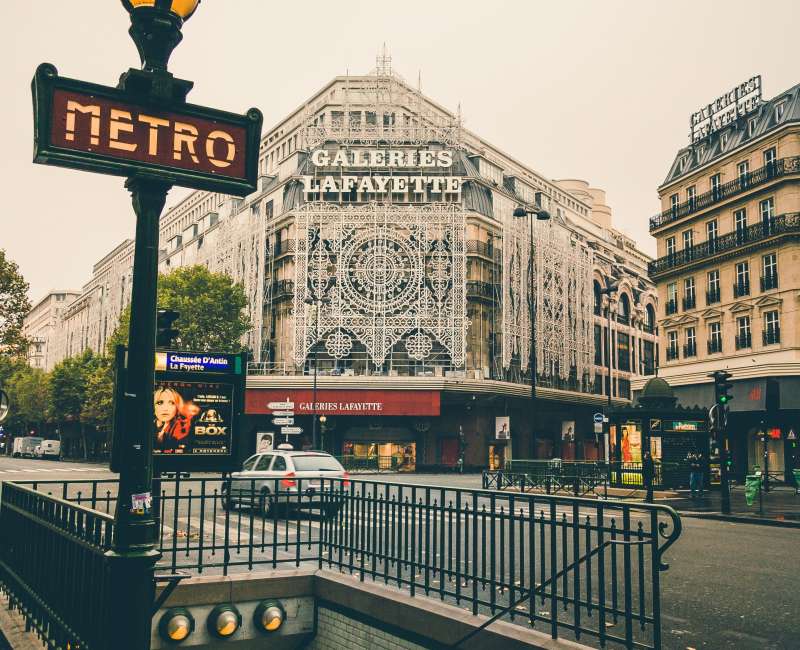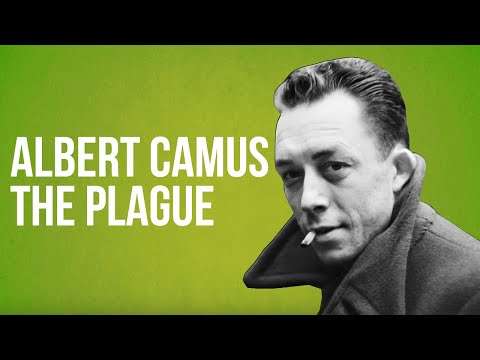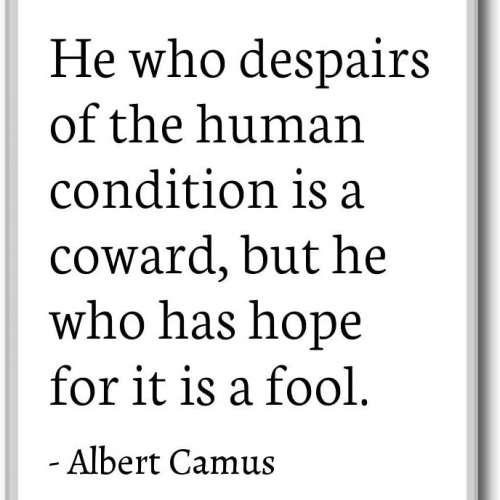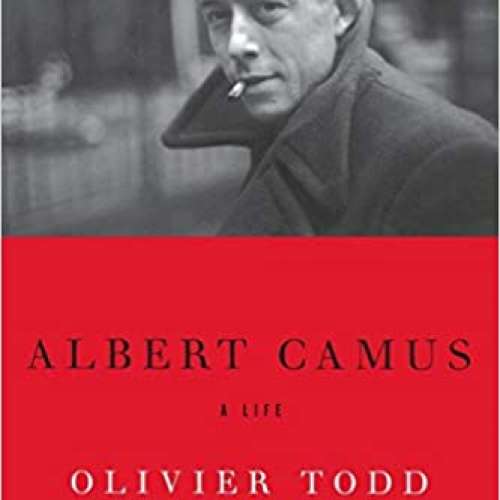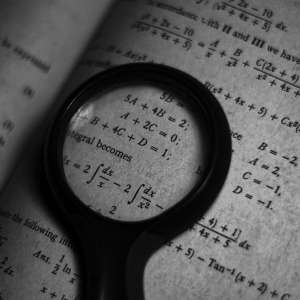

Albert Camus (1913-1960)
You will never be happy if you continue to search for what happiness consists of. You will never live if you are looking for the meaning of life.
Albert Camus was a French philosopher, author, and journalist. He won the Nobel Prize in Literature at the age of 44 in 1957, the second-youngest recipient in history. His works include The Stranger, The Plague, The Myth of Sisyphus, The Fall, and The Rebel. Camus was born in Algeria a French colony at the time to French Pieds Noirs parents. His citizenship was French. He spent his childhood in a poor neighbourhood and later studied philosophy at the University of Algiers.
He was in Paris when the Germans invaded France during World War II in 1940. Camus tried to flee but finally joined the French Resistance where he served as editor-in-chief at Combat, an outlawed newspaper. After the war, he was a celebrity figure and gave many lectures around the world. He married twice but had many extramarital affairs. Camus was politically active; he was part of the left that opposed the Soviet Union because of its totalitarianism. Camus was a moralist and leaned towards anarcho-syndicalism. He was part of many organisations seeking European integration. During the Algerian War 1954–1962, he kept a neutral stance, advocating for a multicultural and pluralistic Algeria, a position that caused controversy and was rejected by most parties.
Philosophically, Camus's views contributed to the rise of the philosophy known as absurdism. He is also considered to be an existentialist, even though he firmly rejected the term throughout his lifetime.
Life
Early years and education
Albert Camus was born on 7 November 1913 in a working-class neighbourhood in Mondovi present-day Dréan, in French Algeria. His mother, Catherine Hélène Camus née Sintès, was French with Spanish-Balearic ancestry. His father, Lucien Camus, a poor French agricultural worker, died in the Battle of the Marne in 1914 during World War I. Camus never knew him. Camus, his mother and other relatives lived without many basic material possessions during his childhood in the Belcourt section of Algiers. He was a second-generation French in Algeria, a French territory from 1830 until 1962. His paternal grandfather, along with many others of his generation, had moved to Algeria for a better life during the first decades of the 19th century. Hence, he was called pied-noir, ''black foot''—a slang term for French who were born in Algeria—and his identity and his poor background had a substantial effect on his later life. Nevertheless, Camus was a French citizen, in contrast to the Arab or Berber inhabitants of Algeria who were kept under an inferior legal status. During his childhood, Camus developed a love for football and swimming.
Under the influence of his teacher Louis Germain, Camus gained a scholarship in 1924 to continue his studies at a prestigious lyceum secondary school near Algiers. In 1930, he was diagnosed with tuberculosis. Because it is a transmitted disease, he moved out of his home and stayed with his uncle Gustave Acault, a butcher, who influenced the young Camus. It was at that time that Camus turned to philosophy, with the mentoring of his philosophy teacher Jean Grenier. He was impressed by ancient Greek philosophers and Friedrich Nietzsche. During that time, he was only able to study part-time. To earn money, he took odd jobs: as a private tutor, car parts clerk, and assistant at the Meteorological Institute.

In 1933, Camus enrolled at the University of Algiers and completed his licence de philosophie BA in 1936; after presenting his thesis on Plotinus. Camus developed an interest in early Christian philosophers, but Nietzsche and Arthur Schopenhauer had paved the way towards pessimism and atheism. Camus also studied novelist-philosophers such as Stendhal, Herman Melville, Fyodor Dostoyevsky, and Franz Kafka. In 1933, he also met Simone Hié, then a partner of a friend of Camus, who would become his first wife.
Camus played goalkeeper for the Racing Universitaire d'Alger junior team from 1928 to 1930. The sense of team spirit, fraternity, and common purpose appealed to Camus enormously. In match reports, he was often praised for playing with passion and courage. Any football ambitions disappeared when he contracted tuberculosis at the age of 17. Camus drew parallels among football, human existence, morality, and personal identity. For him, the simplistic morality of football contradicted the complicated morality imposed by authorities such as the state and Church.
Formative years
In 1934, aged 20, Camus was in a relationship with Simone Hié. Simone suffered from an addiction to morphine, a drug she used to ease her menstrual pains. His uncle Gustave did not approve of the relationship, but Camus married Hié to help her fight her addiction. He subsequently discovered she was in a relationship with her doctor at the same time and the couple later divorced. Camus was a womaniser throughout his life.
Camus joined the French Communist Party PCF in early 1935. He saw it as a way to "fight inequalities between Europeans and 'natives' in Algeria," even though he was not a Marxist. He explained: "We might see communism as a springboard and asceticism that prepares the ground for more spiritual activities." Camus left the PCF a year later. In 1936, the independence-minded Algerian Communist Party PCA was founded, and Camus joined it after his mentor Grenier advised him to do so. Camus's main role within the PCA was to organise the Théâtre du Travail "Workers' Theatre". Camus was also close to the Parti du Peuple Algérien Algerian People's Party PPA, which was a moderate anti-colonialist/nationalist party. As tensions in the interwar period escalated, the Stalinist PCA and PPA broke ties. Camus was expelled from the PCA for refusing to toe the party line. This series of events sharpened his belief in human dignity. Camus's mistrust of bureaucracies that aimed for efficiency instead of justice grew. He continued his involvement with theatre and renamed his group Théâtre de l'Equipe "Theatre of the Team". Some of his scripts were the basis for his later novels.
In 1938, Camus began working for the leftist newspaper Alger républicain founded by Pascal Pia as he had strong anti-fascist feelings, and the rise of fascist regimes in Europe was worrying him. By then, Camus had developed strong feelings against authoritative colonialism as he witnessed the harsh treatment of the Arabs and Berbers by French authorities. Alger républicain was banned in 1940 and Camus flew to Paris to take a new job at Paris-Soir as editor-in-chief. In Paris, he almost completed his "first cycle" of works dealing with the absurd and the meaningless—the novel L'Étranger The Outsider UK, or The Stranger US, the philosophical essay Le Mythe de Sisyphe The Myth of Sisyphus and the play Caligula. Each cycle consisted of a novel, an essay and a theatrical play.
World War II, Resistance and Combat
Soon after Camus moved to Paris, the outbreak of World War II began to affect France. Camus volunteered to join the army but was not accepted because he had suffered from tuberculosis. As the Germans were marching towards Paris, Camus fled. He was laid off from Paris-Soir and ended up in Lyon, where he married pianist and mathematician Francine Faure on 3 December 1940. Camus and Faure moved back to Algeria Oran where he taught in primary schools. Because of his tuberculosis, he moved to the French Alps on medical advice. There he began writing his second cycle of works, this time dealing with revolt—a novel La Peste The Plague and a play Le Malentendu The Misunderstanding. By 1943 he was known because of his earlier work. He returned to Paris where he met and became friends with Jean-Paul Sartre. He also became part of a circle of intellectuals including Simone de Beauvoir, André Breton, and others. Among them was the actress María Casares, who would later have an affair with Camus.

Camus took an active role in the underground resistance movement against the Germans during the French Occupation. Upon his arrival in Paris, he started working as a journalist and editor of the banned newspaper Combat. He continued writing for the paper after the liberation of France. Camus used a pseudonym for his Combat articles and used false ID cards to avoid being captured. During that period he composed four Lettres à un Ami Allemand Letters to a German Friend, explaining why resistance was necessary.
Post-World War II
After the War, Camus lived in Paris with Faure, who gave birth to twins, Catherine and Jean in 1945. Camus was now a celebrated writer known for his role in the Resistance. He gave lectures at various universities in the United States and Latin America during two separate trips. He also visited Algeria once more, only to leave disappointed by the continued oppressive colonial policies, which he had warned about many times. During this period he completed the second cycle of his work, with the essay L'Homme révolté The Rebel. Camus attacked totalitarian communism while advocating libertarian socialism and anarcho-syndicalism. Upsetting many of his colleagues and contemporaries in France with his rejection of communism, the book brought about the final split with Sartre. His relations with the Marxist Left deteriorated further during the Algerian War.
Camus was a strong supporter of European integration in various marginal organisations working towards that end. In 1944, he founded the Comité français pour la féderation européenne—CFFE French Committee for the European Federation—declaring that Europe "can only evolve along the path of economic progress, democracy, and peace if the nation states become a federation." In 1947–48, he founded the Groupes de liaison internationale GLI a trade union movement in the context of revolutionary syndicalism "syndicalisme révolutionnaire". His main aim was to express the positive side of surrealism and existentialism, rejecting the negativity and the nihilism of André Breton. Camus also raised his voice against the Soviet intervention in Hungary and the totalitarian tendencies of Franco's regime in Spain.

Camus had numerous affairs, particularly an irregular and eventually public affair with the Spanish-born actress María Casares, with whom he had an extensive correspondence. Faure did not take this affair lightly. She had a mental breakdown and needed hospitalisation in the early 1950s. Camus, who felt guilty, withdrew from public life and was slightly depressed for some time.
In 1957, Camus received the news that he was to be awarded the Nobel Prize in Literature. This came as a shock to him. He was anticipating André Malraux would win the prestigious award. At age 44, he was the second-youngest recipient of the prize, after Rudyard Kipling, who was 42. After this he began working on his autobiography Le Premier Homme The First Man in an attempt to examine "moral learning". He also turned to the theatre once more. Financed by the money he received with his Nobel Prize, he adapted and directed for the stage Dostoyevsky's novel Demons. The play opened in January 1959 at the Antoine Theatre in Paris and was a critical success.
During these years, he published posthumously the works of the philosopher Simone Weil, in the series "Espoir" "Hope" which he had founded for Éditions Gallimard. Weil had great influence on his philosophy, since he saw her writings as an "antidote" to nihilism. Camus described her as "the only great spirit of our times".
Death
Camus died on 4 January 1960 at the age of 46, in a car accident near Sens, in Le Grand Fossard in the small town of Villeblevin. He had spent the New Year's holiday of 1960 at his house in Lourmarin, Vaucluse with his family, and his publisher Michel Gallimard of Éditions Gallimard, along with Gallimard's wife, Janine, and daughter. Camus's wife and children went back to Paris by train on 2 January, but Camus decided to return in Gallimard's luxurious Facel Vega HK500. The car crashed into a plane tree on a long straight stretch of the Route nationale 5 now the RN 6. Camus, who was in the passenger seat and not wearing a safety belt, died instantly. Gallimard died a few days later, although his wife and daughter were unharmed. There has been speculation that Camus was assassinated by the KGB because of his criticism of Soviet abuses.
144 pages of a handwritten manuscript entitled Le premier Homme The First Man were found in the wreckage. Camus had predicted that this unfinished novel based on his childhood in Algeria would be his finest work. Camus was buried in the Lourmarin Cemetery, Vaucluse, France, where he had lived. His friend Sartre read a eulogy, paying tribute to Camus's heroic "stubborn humanism".
Literary career
Camus's first publication was a play called Révolte dans les Asturies Revolt in the Asturias written with three friends in May 1936. The subject was the 1934 revolt by Spanish miners that was brutally suppressed by the Spanish government resulting in 1,500 to 2,000 deaths. In May 1937 he wrote his first book, L'Envers et l'Endroit Betwixt and Between, also translated as The Wrong Side and the Right Side. Both were published by Edmond Charlot's small publishing house.
Camus separated his work into three cycles. Each cycle consisted of a novel, an essay, and a play. The first was the cycle of the absurd consisting of L'Étranger, Le Mythe de Sysiphe, and Caligula. The second was the cycle of the revolt which included La Peste The Plague, L'Homme révolté The Rebel, and Les Justes The Just Assassins. The third, the cycle of the love, consisted of Nemesis. Each cycle was an examination of a theme with the use of a pagan myth and including biblical motifs.
The books in the first cycle were published between 1942 and 1944, but the theme was conceived earlier, at least as far back as 1936. With this cycle, Camus aims to pose a question on the human condition, discuss the world as an absurd place, and warn humanity of the consequences of totalitarianism.

Camus began his work on the second cycle while he was in Algeria, in the last months of 1942, just as the Germans were reaching North Africa. In the second cycle, Camus used Prometheus, who is depicted as a revolutionary humanist, to highlight the nuances between revolution and rebellion. He analyses various aspects of rebellion, its metaphysics, its connection to politics, and examines it under the lens of modernity, of historicity and the absence of a God.
After receiving the Nobel Prize, Camus gathered, clarified, and published his pacifist leaning views at Actuelles III: Chronique algérienne 1939–1958 Algerian Chronicles. He then decided to distance himself from the Algerian War as he found the mental burden too heavy. He turned to theatre and the third cycle which was about love and the goddess Nemesis.
Two of Camus's works were published posthumously. The first entitled La mort heureuse A Happy Death 1970, features a character named Patrice Mersault, comparable to The Stranger's Meursault. There is scholarly debate about the relationship between the two books. The second was an unfinished novel, Le Premier homme The First Man 1995, which Camus was writing before he died. It was an autobiographical work about his childhood in Algeria and its publication in 1994 sparked a widespread reconsideration of Camus's allegedly unrepentant colonialism.
Political stance
Camus was a moralist; he claimed morality should guide politics. While he did not deny that morals change over time, he rejected the classical Marxist doctrine that history defines morality.
Camus was also strongly critical of authoritarian communism, especially in the case of the Soviet regime, which he considered totalitarian. Camus rebuked Soviet apologists and their "decision to call total servitude freedom". As a proponent of libertarian socialism, he claimed the USSR was not socialist, and the United States was not liberal. His fierce critique of the USSR caused him to clash with others on the political left, most notably with his friend Jean-Paul Sartre.
Active in the French Resistance to the German occupation of France during World War II, Camus wrote for and edited the famous Resistance journal Combat. Of the French collaboration with the German occupiers, he wrote: "Now the only moral value is courage, which is useful here for judging the puppets and chatterboxes who pretend to speak in the name of the people." After France's liberation, Camus remarked, "This country does not need a Talleyrand, but a Saint-Just." The reality of the bloody postwar tribunals soon changed his mind: Camus publicly reversed himself and became a lifelong opponent of capital punishment.
Camus leaned towards anarchism, a tendency that intensified in the 1950s, when he came to believe that the Soviet model was morally bankrupt. Camus was firmly against any kind of exploitation, authority and property, bosses, the State and centralization. Philosophy professor David Sherman considers Camus an anarcho-syndicalist. Graeme Nicholson considers Camus an existentialist anarchist.
The anarchist André Prudhommeaux first introduced him at a meeting of the Cercle des Étudiants Anarchistes "Anarchist Student Circle" in 1948 as a sympathiser familiar with anarchist thought. Camus wrote for anarchist publications such as Le Libertaire, La Révolution prolétarienne, and Solidaridad Obrera "Workers' Solidarity", the organ of the anarcho-syndicalist Confederación Nacional del Trabajo CNT "National Confederation of Labor".
Camus kept a neutral stance during the Algerian Revolution 1954–62. While he was against the violence of the National Liberation Front FLN he acknowledged the injustice and brutalities imposed by colonialist France. He was supportive of Pierre Mendès' Unified Socialist Party PSU and its approach to the crisis;· Mendes advocated reconciliation. Camus also supported a like-minded Algerian militant, Aziz Kessous. Camus traveled to Algeria to negotiate a truce between the two belligerents but was met with distrust by all parties. His confrontation with an Algerian nationalist during his acceptance speech for the Nobel Prize caused a sensation. When confronted with the dilemma of choosing between his mother and justice, his response was: “People are now planting bombs in the tramways of Algiers. My mother might be on one of those tramways. If that is justice, then I prefer my mother.” According to David Sherman, Camus tried to highlight the false dichotomy of the two choices as the use of terrorism and indiscriminate violence could not bring justice under any circumstances. However, his response has been widely misreported as: "I have always condemned terrorism, and I must condemn a terrorism that works blindly in the streets of Algiers and one day might strike at my mother and family. I believe in justice, but I will defend my mother before justice.” Camus' critics have labelled the misquoted response as reactionary and a result of a colonialist attitude.
He was sharply critical of the proliferation of nuclear weapons and the bombings of Hiroshima and Nagasaki. In the 1950s, Camus devoted his efforts to human rights. In 1952, he resigned from his work for UNESCO when the UN accepted Spain, under the leadership of the caudillo General Francisco Franco, as a member. Camus maintained his pacifism and resisted capital punishment anywhere in the world. He wrote an essay against capital punishment in collaboration with Arthur Koestler, the writer, intellectual, and founder of the League Against Capital Punishment entitled Réflexions sur la peine capitale, published by Calmann-Levy in 1957.
Role in Algeria
Born in Algeria to French parents, Camus was familiar with the institutional racism of France against Arabs and Berbers, but he was not part of a rich elite. He lived in very poor conditions as a child but was a citizen of France and as such was entitled to citizens' rights; the Arab and Berbers majority of the country were not.
Camus was a vocal advocate of the "new Mediterranean Culture". This was a term he used to describe his vision of embracing the multi-ethnicity of the Algerian people, in opposition to "Latiny", a popular pro-fascist and antisemitic ideology among other Pieds-Noirs—or French or Europeans born in Algeria. For Camus, this vision encapsulated the Hellenic humanism which survived among ordinary people around the Mediterranean Sea. His 1938 address on "The New Mediterranean Culture" represents Camus's most systematic statement of his views at this time. Camus also supported the Blum–Viollette proposal to grant Algerians full French citizenship in a manifesto with arguments defending this assimilative proposal on radical egalitarian grounds. In 1939, Camus wrote a stinging series of articles for the Alger républicain on the atrocious living conditions of the inhabitants of the Kabylie highlands. He advocated for economic, educational and political reforms as a matter of emergency.
In 1945, following the Sétif and Guelma massacre after Arab revolts against French mistreatment, Camus was one of only a few mainland journalists to visit the colony. He wrote a series of articles reporting on conditions, and advocating for French reforms and concessions to the demands of the Algerian people.
When the Algerian War began in 1954, Camus was confronted with a moral dilemma. He identified with the Pieds-Noirs such as his own parents and defended the French government's actions against the revolt. He argued the Algerian uprising was an integral part of the "new Arab imperialism" led by Egypt, and an "anti-Western" offensive orchestrated by Russia to "encircle Europe" and "isolate the United States". Although favoring greater Algerian autonomy or even federation, though not full-scale independence, he believed the Pieds-Noirs and Arabs could co-exist. During the war, he advocated a civil truce that would spare the civilians. It was rejected by both sides who regarded it as foolish. Behind the scenes, he began working for imprisoned Algerians who faced the death penalty. His position drew much criticism from the left who considered colonialism unacceptable. In their eyes, Camus was no longer the defender of the oppressed.
Camus once confided that the troubles in Algeria "affected him as others feel pain in their lungs."
Philosophy
Existentialism
Even though Camus is mostly connected to Absurdism, he is routinely categorized as an Existentialist, a term he rejected on several occasions.
Camus himself said his philosophical origins lay in ancient Greek philosophy, Nietzsche, and 17th-century moralists whereas existentialism arises from 19th- and early 20th-century philosophy such as Kierkegaard, Karl Jaspers, and Heidegger. He also said his work, The Myth of Sisyphus, was a criticism of various aspects of existentialism. Camus was rejecting existentialism as a philosophy, but his critique was mostly focused on Sartrean existentialism, and to a lesser extent on religious existentialism. He thought that the importance of history held by Marx and Sartre was incompatible with his belief in human freedom. David Sherman and others also suggest the rivalry between Sartre and Camus also played a part in his rejection of existentialism. David Simpson argues further that his humanism and belief in human nature set him apart from the existentialist doctrine that existence precedes essence.
On the other hand, Camus focused most of his philosophy around existential questions. The absurdity of life, the inevitable ending death is highlighted in his acts. His belief was that the absurd—life being void of meaning, or man's inability to know that meaning if it were to exist—was something that man should embrace. His anti-Christianity, his commitment to individual moral freedom and responsibility are only a few of the similarities with other existential writers. More importantly, Camus addressed one of the fundamental questions of existentialism: the problem of suicide. He wrote: "There is only one really serious philosophical question, and that is suicide." Camus viewed the question of suicide as arising naturally as a solution to the absurdity of life.
Absurdism
Many existentialist writers have addressed the Absurd, each with their own interpretation of what it is and what makes it important. Kierkegaard explains that the absurdity of religious truths prevents us from reaching God rationally. Sartre recognizes the absurdity of individual experience. Camus's thoughts on the Absurd begins with his first cycle of books and the literary essay The Myth of Sisyphus, Le Mythe de Sisyphe, his major work on the subject. In 1942 he published the story of a man living an absurd life in L'Étranger. He also wrote a play about the Roman emperor Caligula, pursuing an absurd logic, which was not performed until 1945. His early thoughts appeared in his first collection of essays, L'Envers et l'endroit Betwixt and Between in 1937. Absurd themes were expressed with more sophistication in his second collection of essays, Noces Nuptials, in 1938 and Betwixt and Between. In these essays, Camus reflects on the experience of the Absurd. Aspects of the notion of the Absurd can be found in The Plague.
Camus follows Sartre's definition of the Absurd: "That which is meaningless. Thus man's existence is absurd because his contingency finds no external justification". The Absurd is created because man, who is placed in an unintelligent universe, realises that human values are not founded on a solid external component; or as Camus himself explains, the Absurd is the result of the "confrontation between human need and the unreasonable silence of the world." Even though absurdity is inescapable, Camus does not drift towards nihilism. But the realization of absurdity leads to the question: Why should someone continue to live? Suicide is an option that Camus firmly dismisses as the renunciation of human values and freedom. Rather, he proposes we accept that absurdity is a part of our lives and live with it.
The turning point in Camus's attitude to the Absurd occurs in a collection of four letters to an anonymous German friend, written between July 1943 and July 1944. The first was published in the Revue Libre in 1943, the second in the Cahiers de Libération in 1944, and the third in the newspaper Libertés, in 1945. The four letters were published as Lettres à un ami allemand Letters to a German Friend in 1945, and were included in the collection Resistance, Rebellion, and Death.
Camus regretted the continued reference to himself as a "philosopher of the absurd". He showed less interest in the Absurd shortly after publishing Le Mythe de Sisyphe. To distinguish his ideas, scholars sometimes refer to the Paradox of the Absurd, when referring to "Camus's Absurd".
Revolt
Camus is known for articulating the case for revolting against any kind of oppression, injustice, or whatever disrespects the human condition. He is cautious enough, however, to set the limits on the rebellion. L'Homme révolté The Rebel explains in detail his thoughts on the issue. There, he builds upon the absurd described in The Myth of Sisyphus but goes further. In the introduction, where he examines the metaphysics of rebellion, he concludes with the phrase "I revolt, therefore we exist" implying the recognition of a common human condition. Camus also delineates the difference between revolution and rebellion and notices that history has shown that the rebel's revolution might easily end up as an oppressive regime; he therefore places importance on the morals accompanying the revolution. Camus poses a crucial question: Is it possible for humans to act in an ethical and meaningful manner, in a silent universe? According to him the answer is yes, as the experience and awareness of the Absurd creates the moral values and also sets the limits of our actions. Camus separates the modern form of rebellion into two modes. First, there is the metaphysical rebellion, which is "the movement by which man protests against his condition and against the whole of creation." The other mode, historical rebellion, is the attempt to materialize the abstract spirit of metaphysical rebellion and change the world. In this attempt, the rebel must balance between the evil of the world and the intrinsic evil which every revolt carries, and not cause any unjustifiable suffering.
Legacy
Camus's novels and philosophical essays are still influential. After his death, interest in Camus followed the rise and diminution of the New Left. Following the collapse of Soviet Union, interest in his alternative road to communism resurfaced. He is remembered for his skeptical humanism and his support for political tolerance, dialogue, and civil rights.
Although Camus has been linked to anti-Soviet communism, reaching as far as anarcho-syndicalism, some neo-liberals have tried to associate him with their policies; for instance, the French President Nicolas Sarkozy suggested that his remains be moved to the Panthéon, an idea that angered many on the Left.
Works
The works of Albert Camus include:
Novels
- A Happy Death written 1936–38, published 1971
- The Stranger, often translated as The Outsider. An alternate meaning of "l'étranger" is "foreigner" 1942
- The Plague 1947
- The Fall 1956
- The First man incomplete, published 1994
Short stories
- Exile and the Kingdom collection, 1957, containing the following short stories: "The Adulterous Woman", "The Renegade or a Confused Spirit", "The Silent Men", "The Guest" "Jonas, or the Artist at Work" and "The Growing Stone"
- "The Adulterous Woman"
- "The Renegade or a Confused Spirit"
- "The Silent Men"
- "The Guest"
- "Jonas, or the Artist at Work"
- "The Growing Stone"
Academic theses
- Christian Metaphysics and Neoplatonism Métaphysique chrétienne et néoplatonisme 1935: the thesis that enabled Camus to teach in secondary schools in France
Non-fiction books
- Betwixt and Between, also translated as The Wrong Side and the Right Side collection, 1937
- Nuptials 1938
- The Myth of Sisyphus 1942
- The Rebel 1951
- Algerian Chronicles 1958, first English translation published 2013
- Notebooks 1935–1942 1962
- Notebooks 1942–1951 1965
- American Journals 1978
- Notebooks 1951–1959 2008. Published as Carnets Tome III: Mars 1951 – December 1959 1989
- Correspondance 1944-1959 The correspondance of Albert Camus and María Casares, with a preface by his daughter, Catherine Camus 2017.
Plays
- Caligula performed 1945, written 1938
- The Misunderstanding 1944
- The State of Siege 1948
- The Just Assassins 1949
- Requiem for a Nun Requiem pour une nonne, adapted from William Faulkner's novel by the same name 1956
- The Possessed, adapted from Fyodor Dostoyevsky's novel Demons 1959
Essays
- The Crisis of Man Lecture at Columbia University 28 March 1946
- Neither Victims nor Executioners Series of essays in Combat 1946
- Why Spain? Essay for the theatrical play 1948
- Summer 1954
- Reflections on the Guillotine Réflexions sur la guillotine Extended essay, 1957
- Create Dangerously Essay on Realism and Artistic Creation, lecture at the University of Uppsala in Sweden 1957
More facts
The First Man (2011)
Restless (2000)
The Stranger (1967)
Caligula (1975)


































